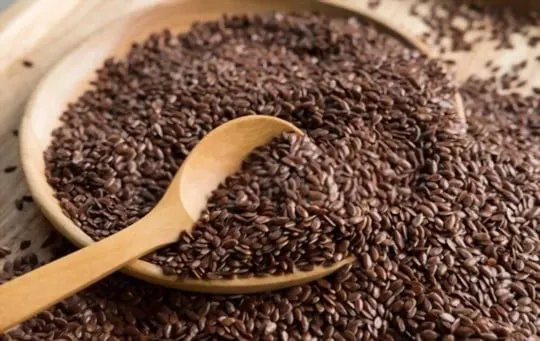There is nothing like a healthy, tasty breakfast to start your day. And what’s better than starting your morning off with a delicious, healthy dish?
One of the most popular choices for a filling and flavorful breakfast is flaxseed.
Flaxseed is a plant that has been used in many different cultures since ancient times. The seeds of the flax plant are rich in omega-3 fatty acids, which have numerous health benefits and can be added to your diet by sprinkling them on cereal or yogurt, adding them to smoothies, or using them as an ingredient in baked goods.
But what does flaxseed taste like? In this article I’ll talk about what it tastes like and whether you should try it.
What is Flax and Flaxseed?

The flaxseed plant is a flowering herbaceous perennial, originally grown in Eurasia and used for food since at least 3000 BC. Flax is grown for fibers and seeds, both of which have been used for thousands of years.
The plant is also known as linseed and typically grown to produce flax (linen) fibers, either as their oil or as a whole-grain flour.
The plant is very small – reaching between 20 centimeters to one meter in height – with slender stems that produce linear leaves at regular intervals along this stem.
There are 2 main types of flaxseed, with the most common being brown flaxseeds.
The seeds are round and have a nutty flavor that can be difficult to detect until they’re ground into meal form.
Golden flaxseed has been proven to have higher levels of lignans than brown flaxseed, which means that it can help you with a variety of health concerns including cancer prevention and heart disease mitigation. If you want to get maximum results from your diet, then choose golden instead of brown.
When you eat them raw they taste like a mix of sesame seed and sunflower – with only about 20% of their calories coming from the fat content.
Benefits of Flaxseed
Flaxseeds contain a variety of nutrients that can help support health and reduce risk factors associated with heart disease, stroke, diabetes, cancer, and osteoporosis.
Flaxseed is an excellent source of omega-three fatty acids, which can help to reduce the risk of heart disease. Besides, flaxseed has a high content of lignans and other phytonutrients that have been shown to have cancer-preventive properties.
Studies have shown that flaxseeds may reduce the risk of breast and prostate cancer.
It’s also rich in fiber, which is important for digestive health, and in minerals such as magnesium. Flaxseed also contains phytochemicals that have antioxidant properties.
It has anti-inflammatory properties that may be beneficial to people suffering from arthritis or other inflammatory conditions like Crohn’s disease and ulcerative colitis.
Flaxseed is a low glycemic index, which means that it can be eaten by those who are trying to lose weight. Foods with a high GI cause blood sugar levels to rise quickly and then fall dramatically – this makes people feel hungry again soon after eating them.
When foods have lower GIs they produce a more gradual release of energy into the bloodstream, so you don’t get such an extreme “sugar rush” or crash afterward.
Some studies have shown that flaxseed may help regulate women’s menstrual cycles because it has estrogen-like effects on the body.
It might also reduce hot flashes in postmenopausal women due to its antiestrogenic properties; however, there isn’t enough research available yet to confirm.
In addition to its benefits as a food item, flaxseed can be used externally on skin conditions such as psoriasis and eczema because it contains large quantities of omega-three fatty acids that are beneficial to dry or irritated skin.
When you use them externally they will absorb through your pores without having any oily residue leftover as other oils might do.
Please note: The information in this blog post should not replace the advice of your physician. As always, check with your doctor before making any changes to your diet or lifestyle according to what you have read here today.
What Does Flaxseed Taste Like? Do Flaxseeds Taste Good?

Flaxseeds can be consumed by themselves, sprinkled on salads, or added to cooking.
There isn’t enough research available yet to confirm if the seeds taste good as part of a meal but they can be enjoyed in their many other forms.
The flavor of flaxseed can be described as nutty or earthy with a hint of sweetness.
Most of the time, the seeds are ground into a powder or meal. The flavor of the seeds is very mild and slightly nutty, although it can vary depending on how they are processed.
The seed itself has an earthy taste that can be described as nutty or even like sesame seeds mixed in with other spices. The ground around other ingredients, you might not notice its presence at all until after your dish’s been cooked.
Flaxseed oil, which is extracted from flaxseeds by pressing them with a hydraulic press to remove all of its valuable fatty acids for use in cooking and medicinal purposes, tastes much more like vegetable oil.
If you want to try this buttery flavored oil over your morning cereal or even salad dressing, go ahead. There’s no need to limit yourself because these oils have so many health benefits too.
If you grind whole flaxseeds into a powder then mix that up with water (a process called mucilage), the mixture will form something similar to a gel.
The mucilage is what helps the flaxseed to help with any constipation issues and gives it a slightly sweet flavor. If you’ve ever had a flaxseed drink, it will have tasted similar to that.
How Much Flaxseed Should You Eat A Day?
Flaxseed has a lot of health benefits, but it can be hard to know how much is too much. Too little flaxseed might not give you the results you want and too much could cause side effects like stomach aches or gas.
Please consult your doctor before adding flaxseed to your diet because it can interact with certain medications.
To know how much flaxseed per day is right for you, think about what the purpose of adding flaxseed to your diet is: are you trying to lose weight? Do you have a disease like diabetes or cholesterol problems?
Is there another specific health issue that’s been bothering you lately? Each person will need different amounts of flaxseeds for them to see success.
The recommended amount of flaxseed per day for people trying to lose weight is one or two tablespoons.
The recommended amount of flaxseed per day for people with cholesterol problems, diabetes, and other chronic diseases is between three and six tablespoons.
Flaxseed can be consumed in a variety of ways. You can sprinkle them on your food, put them into a smoothie or shake, add them to cereal and yogurt, mix with water for a drink.
It’s important to make sure you are consuming the correct type of flaxseed. The whole seed is the right choice if you want to eat them as a snack, but if you’re consuming it for health reasons then ground seeds are better because they can be digested more easily.
How to Cook Flaxseeds?
Flaxseed is one of the most nutritious foods in existence. It contains a good amount of fiber, protein, and omega-3 fatty acids.
This superfood can even help with high cholesterol levels and diabetes. But what’s the best way to consume it? How do you eat flaxseed?
Let’s start with the basic recipe.
– Put the desired amount of flaxseeds into a bowl and crush them with something hard like a mortar or pestle.
– Add some water to help grind the seeds, but don’t overdo it.
– Blend this mixture in your blender until you become satisfied with the texture. It should be easily drinkable when finished.
– If possible, add honey for sweetness and vanilla extract for flavor. Enjoy on its own as an energizing breakfast drink or pour over ice cream or yogurt to make a quick snack that’s sure to please everyone.
You can also roast your flax seeds. Roasting gives the nutty flavor and darkens its color.
– Preheat your oven to 350 degrees Fahrenheit
– Put the desired amount of flaxseeds on a small baking sheet or dish with low sides, then roast for about 15 minutes until they’ve reached a deep golden brown color. You’ll know they’re done when you smell that sweet, roasted scent in the air.
– Remove from the oven and set aside to cool before adding them to cereal or yogurt as an added crunchy texture. Or eat on their own because it’s just so good.
Conclusion
In conclusion, flax seeds are a surprisingly surprising and beneficial food to add to your diet.
These tiny little seeds are packed with omega-three fatty acids, fiber, magnesium, folate, manganese, and lignans that offer benefits for many different bodily functions. And they’re so easy to incorporate in the kitchen.
So next time you find yourself at your grocery store, grab some flaxseed too – we know you won’t regret it.

What Does Flaxseed Taste Like? Do FlaxseedsTaste Good?
Ingredients
- Flaxseeds
- Ingredients from your favorite recipes
Instructions
- Depending on the recipes you choose, the taste can vastly differ.
- For authentic results, it is important to choose a recipe that will highlight the original flavor.
- Have fun experimenting with different recipes and taste tests!
